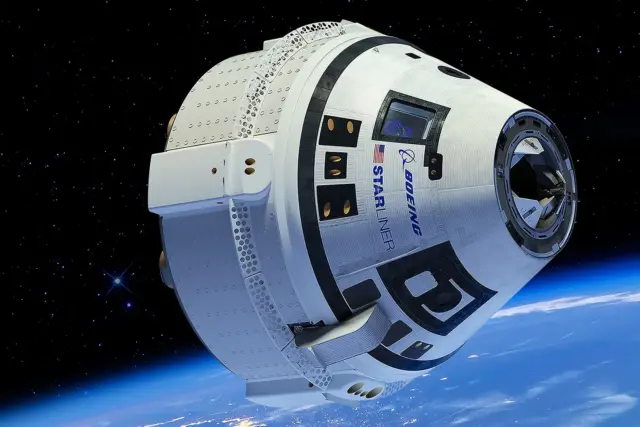
The Boeing Starliner’s journey to the International Space Station (ISS) in June 2024 was far more perilous than initially revealed, with astronauts briefly losing full control of the spacecraft during the critical docking procedure. Newly disclosed details from astronaut Butch Wilmore paint a picture of a near-disaster, raising serious questions about safety protocols and NASA’s decision-making.
While the launch aboard the United Launch Alliance (ULA) Atlas V rocket proceeded smoothly, and initial post-separation maneuvers were successful, the situation took a dangerous turn as the Starliner approached the ISS. According to Wilmore, the spacecraft experienced a cascade of thruster failures that threatened the mission’s success and the astronauts’ safety.
“We lost the fourth thruster. Now we’ve lost 6DOF control. We can’t maneuver forward. I still have control, supposedly, on all the other axes,” Wilmore 1 recounted in an interview with Ars Technica. This loss of “six degrees of freedom” control meant the astronauts could no longer precisely maneuver the Starliner in all directions, a critical capability for docking with the ISS.
Normally, losing such a significant number of thrusters would trigger an automatic abort of the docking attempt according to established flight rules. However, in a move that has sparked debate, NASA reportedly waived these rules and allowed the Starliner to proceed. This decision placed the astronauts in a precarious situation. With the loss of forward control, the Starliner was in a bind: it couldn’t dock securely with the station, but equally concerning, it couldn’t properly orient itself for the return journey to Earth.
The situation grew increasingly tense as mission control in Houston worked frantically to regain control of the failing spacecraft. Wilmore praised the ground team as “heroes” for their efforts during the crisis. Eventually, flight controllers managed to remotely override the Starliner’s computer and reset the thrusters. This intervention brought two of the failed thrusters back online, providing just enough control to allow the Starliner to dock with the ISS.
However, the ordeal didn’t end there. While astronauts Wilmore and Suni Williams safely boarded the station, the damaged Starliner posed a significant challenge for their return. Effectively stranded, their initial eight-day mission stretched into nearly ten months. NASA ultimately deemed the Starliner unsafe for their return journey due to the unresolved thruster issues and newly discovered helium leaks in the propulsion system.
As a contingency, a SpaceX Crew Dragon capsule was sent to the ISS in September 2024. Wilmore and Williams eventually returned to Earth aboard this SpaceX capsule in March 2025, marking the end of an unexpectedly long stay in space. The Boeing Starliner, meanwhile, returned to Earth without a crew in September 2024.
The decision to proceed with the docking despite the loss of control has raised eyebrows within the spaceflight community. Why were established safety protocols seemingly disregarded? What factors led to NASA’s confidence in overriding these rules? These are questions that are likely to be scrutinized in the aftermath of this potentially catastrophic incident.
The Starliner program has faced numerous setbacks and delays, costing Boeing billions of dollars. This latest incident further underscores the challenges in developing and operating crewed spacecraft. The fact that astronauts were put in such a vulnerable position has understandably triggered concerns about the program’s readiness and the safety of future missions.
While the astronauts returned safely, the near-loss of control during docking serves as a stark reminder of the inherent risks of spaceflight and the critical importance of adhering to stringent safety regulations. The full details of the thruster failures and NASA’s decision-making process will likely be the subject of intense review and analysis in the coming months. The incident also highlights the crucial role of mission control teams in responding to unexpected emergencies and ensuring the safety of astronauts in space.
The successful docking, despite the significant challenges, can be seen as a testament to the skill and quick thinking of both the astronauts and the ground control team. However, it also begs the question: how much risk is acceptable when human lives are on the line? The incident will undoubtedly lead to a reassessment of flight rules and protocols to prevent similar situations in the future and ensure the continued safety of crewed missions to the International Space Station.










